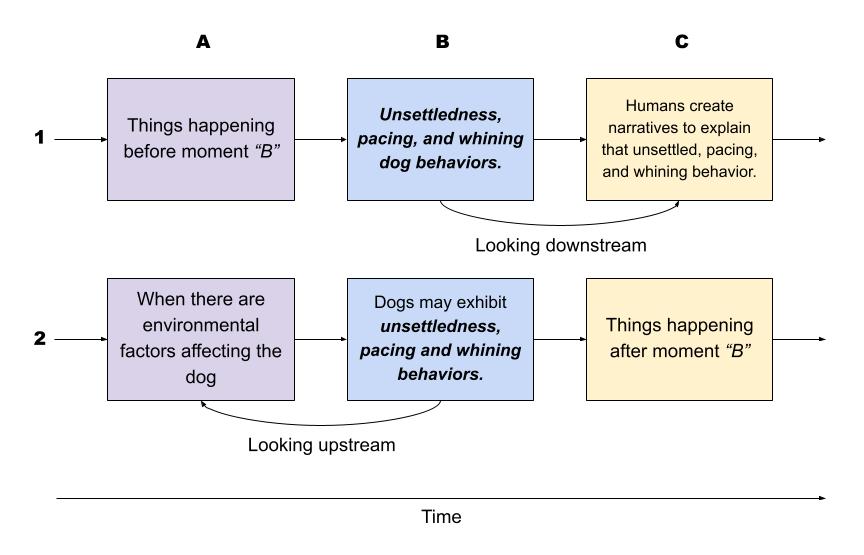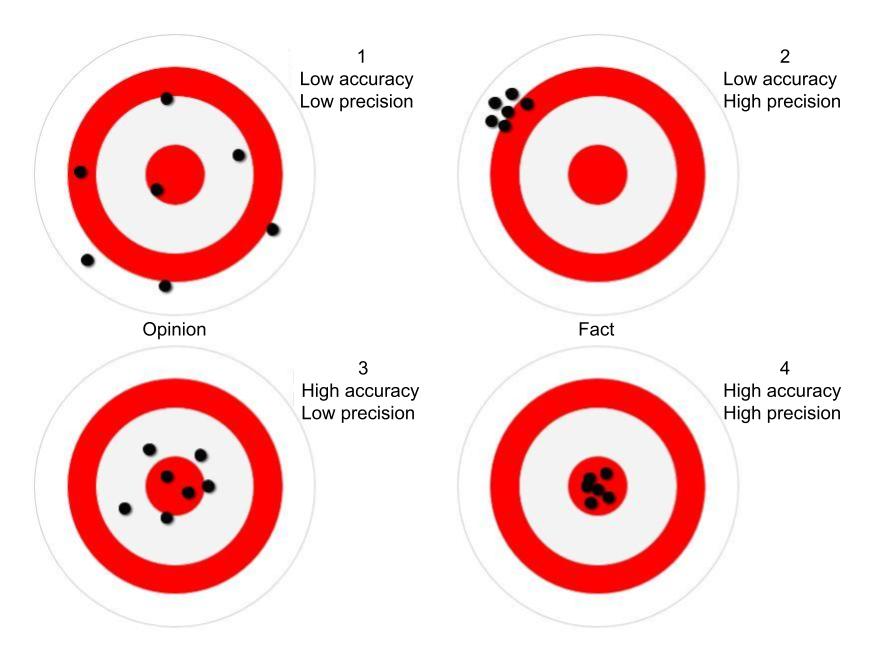Someone asked:
Why is my dog getting into moods where he’s unsettled, pacing, and whining?
BNBR, being nice and being respectful, don’t ask “why.”
What dogs do is what they’re saying. (Ask me about this!)
So instead of their unsettledness, pacing, and whining being a trigger for you to make up a narrative for why they’re unsettled, pacing, and whining, look upstream and understand that they’re unsettled, pacing, and whining because something or multiple things in their world is making them do their unsettled, pacing, and whining behaviors.
So, what I’ve said so far looks like 1 or 2, below:
- Unsettledness, pacing, whining dog behaviors happen → humans create a narrative to explain that unsettled, pacing and whining behavior.
- When there are environmental factors affecting the dog → dogs may exhibit unsettledness, pacing and whining behaviors.
It looks better when presented like this:

Here’s where you have to put on your THIMKING cap. Approach 1 will create 1,001 answers from 1,001 different observers. It’ll be 1,001 opinions being offered, with little to no agreement among all of them.
Approach 2 has to be approached differently. Don’t make up the narratives. The onus is on you to first collect and identify as many times as possible those times when your dog was driven to exhibit the unsettledness, pacing, and whining behaviors. Then identify which situations, patterns, or environmental characteristics are being identified through your dog’s consistently repeating those behaviors through your having put the time and effort into identifying them as they happened in sequence.
Clearly, the easiest thing to do is approach 1—to just make up a narrative. You’ll think and believe that you’ve nailed it, but it’ll never be accurate.
It’s harder and it takes more time to go through approach 2. You’ll have to stop and look backward in time, and let Nature tell you through Her accurate yet crude communication (through the dog’s behaviors) what it is that She’s attempting to communicate to you.
It’s interesting to note that in both cases, you’re creating narratives. However, in approach 2, the narratives will cluster like target 4 below.
Opinions will always be spread out and will always look more like target 1.

